BY STEVE JOHNSON ()
The Weston Electrical Instrument Company was founded by Edward Weston. Weston is most known for his designs and the manufacturing of precision electrical measuring instruments for laboratories and industry.
Born in England in 1850, Edward Weston attended medical school and became a chemist. He then moved to the United States and made advances in electroplating, power generation, and the electric light. In 1888 he formed The Weston Electrical Instrument Company and developed an instrument to accurately measure current. From there, Weston Electrical Instruments went on to manufacture precision voltmeters, ammeters, watt meters, light meters, and many other instruments for laboratory, industrial, and commercial use. Today I receive more e-mail inquiring about Weston meters and their production dates, usage, and value than any other brand — a testament to the sheer number of electrical measuring instruments Weston produced through the years.
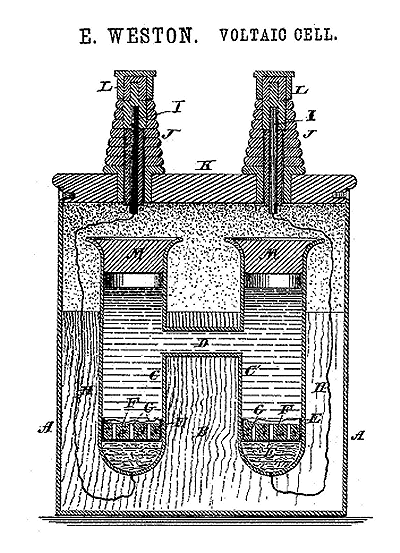
The 1893 Weston “Voltaic Cell” used as a standard for calibration and testing
Among Weston's early achievements was the Weston “Voltaic Cell,” which produced a constant voltage suitable for calibration and laboratory use. Patented in 1893, Weston's Voltaic Cell became known as a “Standard Cell.” Its advantage was in its temperature-independent chemical design, which allowed for higher accuracy in production test environments over any of its competitors.
Weston Electrical Instrument Standard Cells are still in use today, and later examples may be found at auctions for under $60.

Weston 528 Series Meter
One of the most popular test instruments Weston produced was the 489 and 528 series miniature portable AC and DC meters. These miniature meters were manufactured for many years and were designed for a single use. Over 20 different miniature portable meters for measuring AC and DC voltage or current were available by the mid 1930s. I have two examples of these meters, and both still work within their original specifications in spite of being 80 years old. Today when attending large swap meets, I usually find two or three for sale. In good working condition with their original leather case and test leads, expect to see an asking price of $15 to $40. Meters without a case may frequently be found for well under $15.
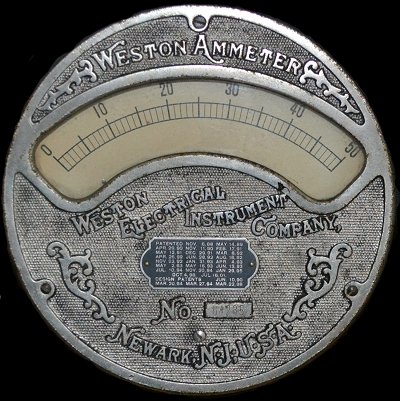
Early Weston industrial ammeter from the 1800s
Weston produced thousands if not millions of panel meters through the years. The most popular of these are the large ornate industrial meters from the late 1800s. At over seven inches in diameter, these large voltage and ammeters were used in factories, in power plants, and on board ships. Many will have a plate in the middle of the face listing several patent dates and will usually have large threaded posts or copper blades protruding from the back for connection to an electrical system. Sought after by collectors as display items, these early large panel meters will sell at auction for between $60 and $200 depending on cosmetic condition and how elaborate the design on the face is. Later meters of this size, manufactured in the early 1900s with planer faces, can be found for much less.
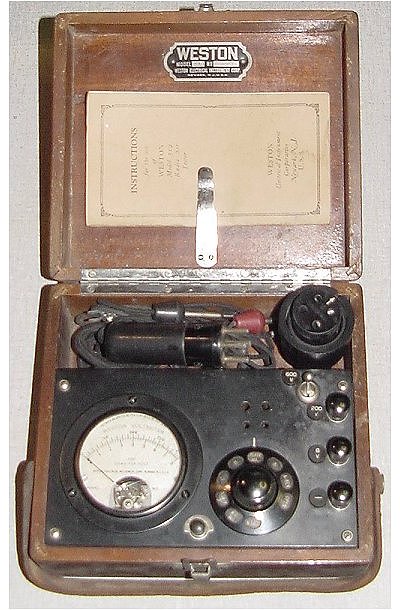
One of Weston's early tube testers from 1928
By the 1920s Weston was firmly entrenched as one of the top manufactures of volt and current meters. With the use of vacuum tubes increasing, many tube manufacturers concentrated on building testers for use in their production lines. Weston also saw a need and began producing tube and set testers to support tube manufacturing quality control as well as portable models for the service industry.
One of Weston's early vacuum tube testers, the model 519 shown above, tested a tube in the circuit. The serviceman would remove the tube and place a cable from the tester in the tube socket. He would then place the tube to be tested in the 519s test socket. The tester would then make measurements using the power from the circuit.
This type of in-circuit testing remained popular until the mid 1930s when it was phased out. This was due mainly to the increase in the number of different vacuum tubes and sockets beyond the amount of adapters that could easily be carried, and the length of the test cable affecting readings in newer circuits.
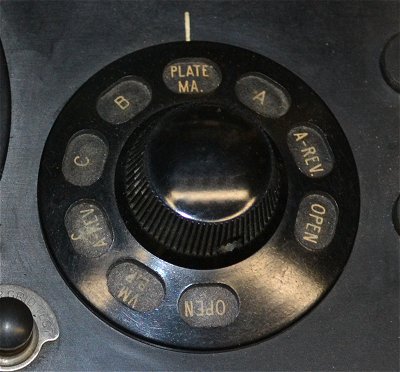
Rotary dial and four-pin socket of the 519
Like the 519, many of Weston's early tube testers incorporated a unique rotary dial for selecting the parameters of the particular type of tube being tested. Weston's dial resembled the dial of a rotary telephone. This makes these early tube testers easy to spot. As the number of tube types and socket pin-outs increased beyond what could be selected by one or two of these dials, later models began using banks of switches to set tube parameters.
On occasion you may find examples of the early Weston tube testers at swap meets for $20 or $30 in poor to fair condition but one of these rotary dial models may sell for up to $100 or more at auction in very good condition with its original case and documentation. These early models would be very limited for testing tubes today and are usually purchased for display.
Since these early testers used the unit under test for power and did not have internal power supplies, they contained very few components and are fairly easy to electrically restore. With fewer parts to fail, most often these were taken out of service due to their inability to test newer vacuum tubes.
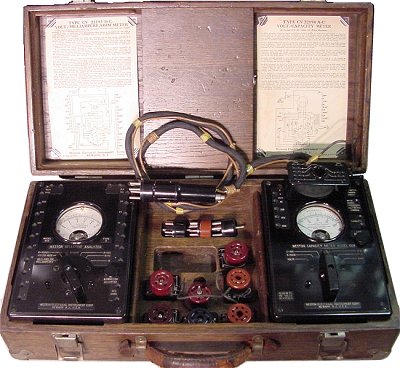
The Weston 664, 665, 666 combination Set Tester
The Weston combination set tester was manufactured during the 1940s and many were produced for military use. More than a vacuum tube tester, these units were designed to take readings while plugged into a tube socket or by utilizing test leads which would have less effect on a circuit. The set tester usually combined the Weston model 664 capacity meter, a model 665 selective analyzer for voltage and milliamp measurements, and a model 666 “Socket Selector Unit” with a cable and a number of tube socket adapters that could used for taking direct readings from a tube socket. Everything was built into an oak case with holders to keep all parts and adapters organized and in place. All three models contained in the set were also available separately. Several versions were produced for the military. The U.S. Navy used the OE versions with OE-6 dated around 1940 and OE-12 dated around 1944.
The Navel set I have in my collection works well and still reads within its original specifications. I have seen complete sets sell for as low as $20 at auction and as high as $125 in very good condition. Unfortunately, not all sets I have seen are complete containing all three units and their adapters. Finding parts of the Weston combination set tester at swap meets is common, and individual pieces are usually priced around a few dollars by themselves.
The Weston Electrical Instrument Company was purchased by Daystrom in 1954 and many testers you find that were manufactured after 1954 will be labeled “Daystrom Weston.” To this day, I have never found a Weston model that was poorly designed.
For more information and examples of early electronic technology, view my collection at StevesAntiqueTechnology.com .
Advertisement





